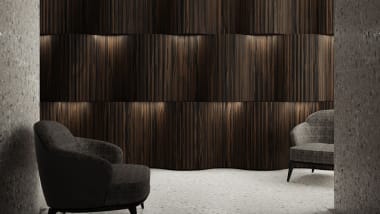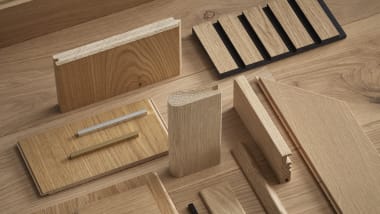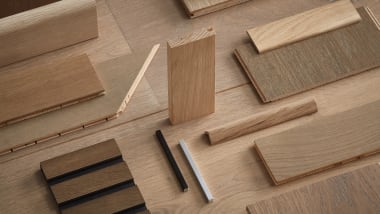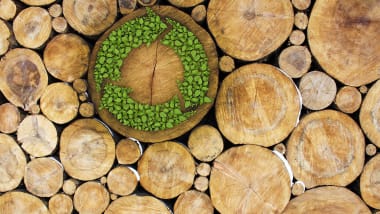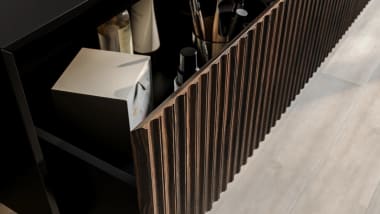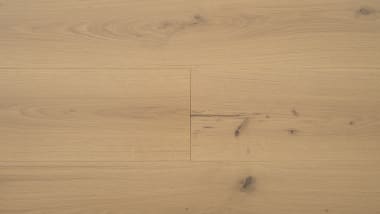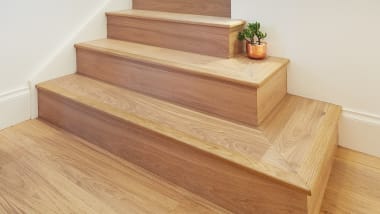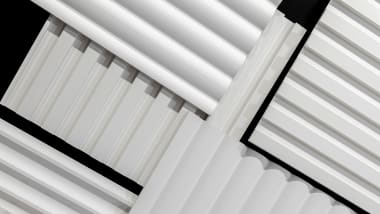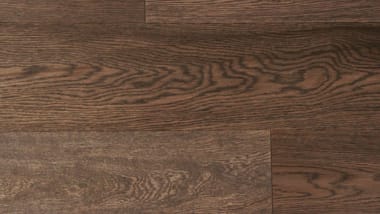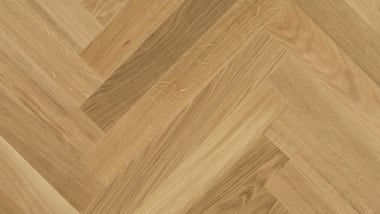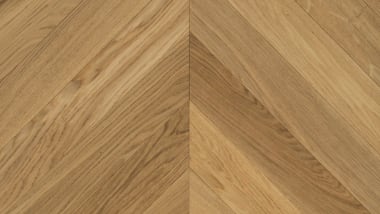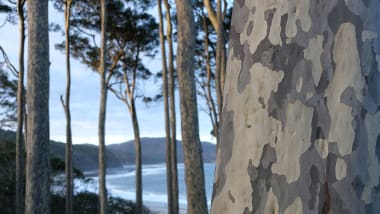Understanding the Natural Characteristics of Wood Flooring
27 Jul 2023
The unique and natural characteristics of wood flooring are part of the allure of a genuine timber floor. However, sometimes these characteristics can come as a bit of a surprise if you are new to the wonderful world of wood.
We've put together this short video to help you navigate and understand what characteristics to expect when you purchase a beautiful and genuine wood floor.
UNDERSTANDING THE NATURAL CHARACTERISTICS OF WOOD FLOORING
To help you navigate the wonderful world that is wood flooring, we've put together this video to cover some of the common and beautiful natural characteristics of wood, that can often be mistaken for product defects.
In fact, these characteristics are part of the natural beauty of real, genuine timber and why so many opt for genuine timber floors for their homes, workplaces, restaurants and more.
Our Interior Designer, Simone talks about:
• Sapwood
• Knots and filler
• Medullary rays, checks and shakes
Check out this video to gain an insight and understanding into the characteristics you can expect when selecting to install a stunning and truly unique wood floor in your home or commercial space.
Scroll down to read in detail about the natural characteristics of real wood floors.
Let's talk about the characteristics of wood.
The natural characteristics of real, genuine wood such as colour variations, knots, fillers and sapwood, are the much loved and natural, beautiful characteristics of genuine timber. They are most certainly not product defects, however often if one is new to the world of wood, they can come as a bit of a surprise.
Let's dive into exactly what each of these characteristics are and how they come about.
1. Sapwood
Sapwood is the living part of the tree, through which water and sap flowed when it was standing in the forest.
Sapwood contains more moisture than the rest of the wood, due to it's function in the tree to transport the sap and water. As its composition is slightly different to that of the other parts of the wood, sapwood reacts differently to certain treatments such as fuming, smoking and other wood colouring processes. This leads to sapwood often being emphasised, and depending on the look you are going for, you may love or loath it!
Either way, it is a natural and unavoidable characteristic that you can expect with a genuine wood floor. Different products will exhibit more or less sapwood, so it is important to check with your wood flooring consultant to ensure the product you are selecting meets your desires.
The moisture contained in the sapwood is not enough to be of concern. All Havwoods timber flooring is carefully dried and the expertly crafted engineered construction ensures stability and longevity of your beautiful wood floor.

2. Knots in wood and filler
A knot is a mark on the timber made from either the base of a side branch of the tree, or a dominant bud, around which the grain has flown. Knots in timber can often be a sort after feature, particularly for rustic design schemes, as they are a very familiar and beautiful characteristic of wood.

Often if a knot is quite large or deep, small holes can form in the plank. These are often (but not always, depending on the size and depth) filled with "filler" in order to maintain a relatively even surface.
Filler is chosen to compliment the timber colouring rather than match it and may be either white, grey, brown or black in colour.

3. Medullary Rays, Checks and Shakes
Medullary rays are a white ribbon-like pattern that indicates that the plank has been crafted from quarter-sawn timber.
Checks and shakes are slight cracking along or across the grain of the wood and are a normal result of moisture in the wood before the drying process takes place.
Medullary rays, checks and shakes are not product defects and in no way compromise the quality or durability of your timber flooring. Rather they display the unique beauty of nature and are a natural characteristic to expect with real wood flooring.

4. Colour variation
Colour variation between planks, boxes and batches is normal and expected. Depending on the product, it can be subtle or significant. It is not a product defect but rather a desired characteristic of a perfect timber floor.
A good installer, will open several boxes at the time of installation, and “dry-lay” the floor to ensure the colours are mixed throughout the flooring layout. Mixing up the boards from different packs ensures an even spread of different tones and characters over your entire floor layout, giving you that sought-after genuine beauty of a real timber floor.
Want to learn more about timber flooring terminology? Check out our A-Z of Timber Flooring

If you would like further help or have any questions about what characteristics you can expect from your wood flooring, book a complimentary interior design consultation with Simone, jump on our LiveChat, or get in touch and we can assist you.



